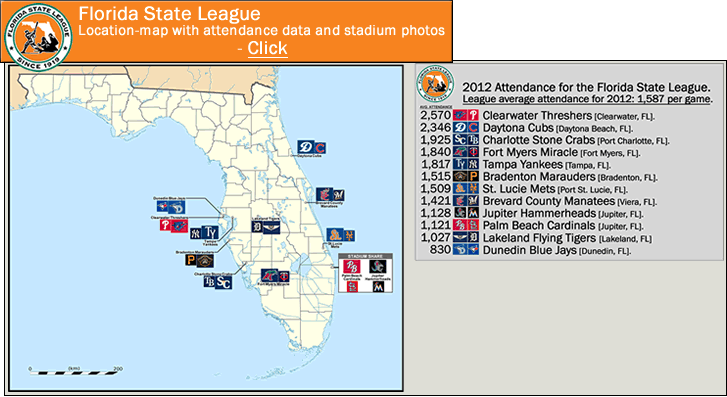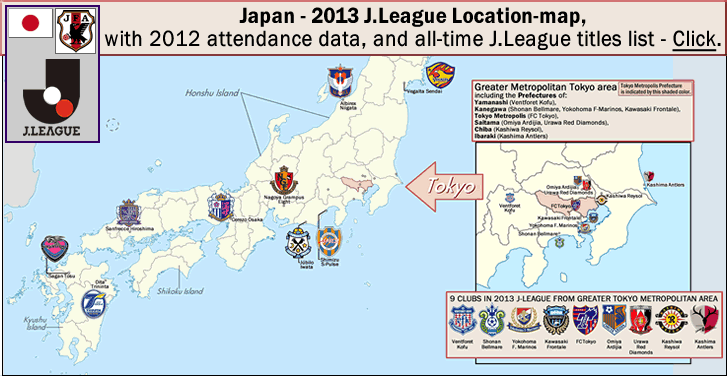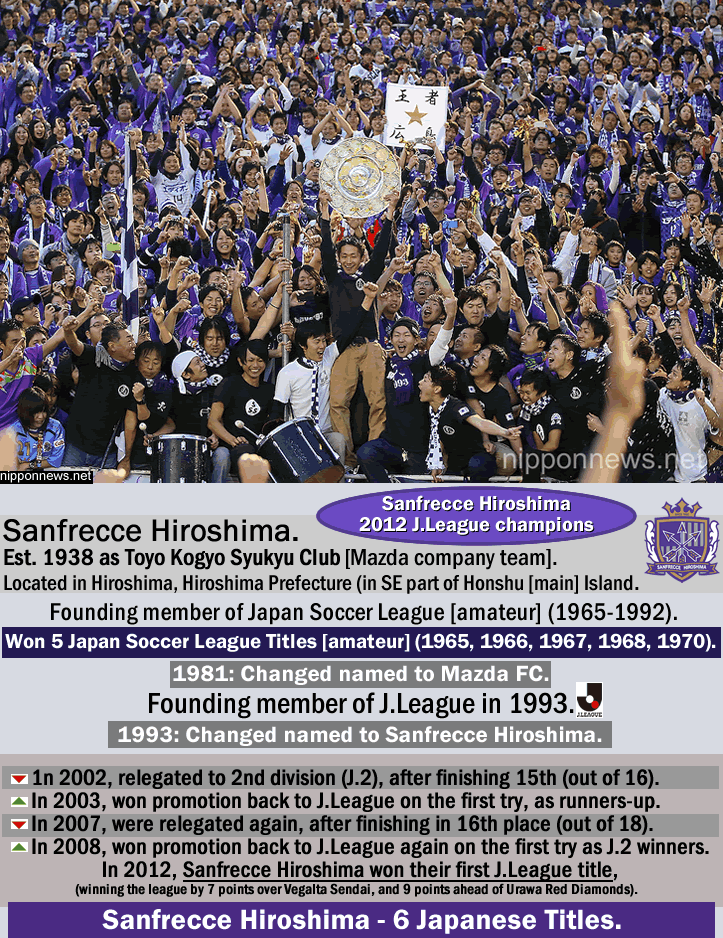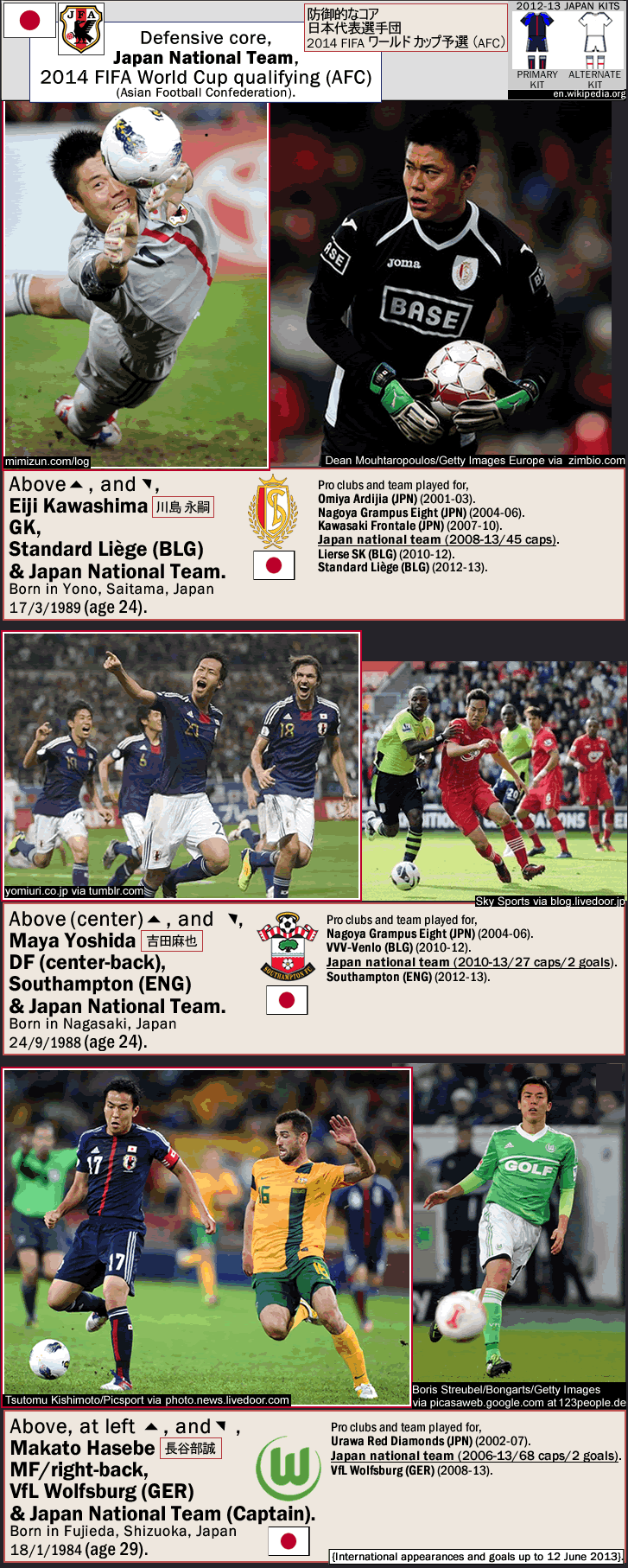
Minor League Baseball: the Florida State League (Class A-Advanced)
…
…
2012 Minor League Baseball attendance – ‘2012 Affiliated Attendance by League‘ (ballparkdigest.com).
The Florida State League was founded in 1919 and has played seasons from 1919 to 1928; from 1936 to 1941; and currently, every year since 1946.
The 12-team Florida State League is one of 3 Advanced-A level minor leagues within Organized Baseball, the other Advanced-A leagues being the 10-team California League and the 8-team Carolina League.
The Florida State League draws very poorly. And, you know, Florida is a pretty populous state – Florida is the 4th-most populous state in the USA, with around 19.3 million people {2012 figure}. Yet only 2 teams currently in the Florida State League are drawing above 2,000 per game. In 2012, the Florida State League averaged 1,592 per game. Compare that to the other 4 leagues in the Class A or Advanced-A levels, which are the Class-A Midwest League (which drew 3,730 per game in 2012), the Advanced-A Carolina League (which drew 3,520 per game in 2012), the Class-A South Atlantic League (which drew 3,279 per game in 2012), and the Advanced-A California League (which drew 2,293 per game in 2012).
In fact, not only does the Florida State League draw considerably worse than the 3 Class-A leagues one tier below them (see previous sentence), but the Florida State League also draws considerably worse than both leagues which are 2 tiers below them – in the two Short Season-A leagues – the New York-Penn League (which drew 3,290 per game in 2012) and the Northwest League (which drew 2,979 per game in 2012). The Florida State League even draws worse than one league 3 tiers below them at the lowest rung of the Major League/minor-league ladder, in one of the Rookie Leagues – the Pioneer League (which is located in some pretty small towns in the Rocky Mountain states of the West, and which averaged 2,317 per game in 2012).
Florida does have a couple of very good drawing minor league baseball teams – in the north of the state, where people speak with a southern accent. While the Florida State League, which is located in central and south Florida, draws very low crowds, two Florida-based minor league teams from the north of the state draw well. Granted, they are placed one minor-league-level higher, in Double-A ball. Both are in the Southern League (a Class AA league) – the Jacksonville Suns, from Jacksonville in furthest north-east Florida; and the Pensacola Blue Wahoos, from Pensacola in furthest north-west Florida. The Jacksonville Suns are the oldest continuous member of the Southern League (43 straight seasons now; see this small write-up of the J-ville Suns within my post on the Southern League from 2 years ago, here/ Jacksonville Suns section is at the very end of the post}; the Pensacola Blue Wahoos are a new team that moved to the Florida panhandle in 2012, leaving North Carolina [they were first incarnation of the Carolina Mudcats (I)] {see this illustration explaining Pensacola, FL/ Zebulon, NC/ Kinston, NC MiLB franchise shifts of 2012, which I posted last year in my post on the Carolina League, here}. These two teams were first and second best in attendance in the Southern League in 2012, with Pensacola drawing 4,826 in their first year in 2012, and Jacksonville drawing 4,309 in 2012. Those two average attendances are more than twice as high as what most Florida State League teams draw.
Why does the Florida State League draw so poorly? Because, generally, people in central and south Florida don’t really like baseball. Try to convince them that going to a minor league baseball game is a fun and very inexpensive summertime activity, and you’ll just get vacant stares. Many central and south Floridians probably find baseball to be too slow and relaxed and nuanced. Look at how bad both MLB teams in Florida draw, regardless of how well they both do. The Tampa Bay Rays are, these days, year-in-year out, a competitive ball club, and they won the 2008 AL pennant, while the Marlins have won 2 MLB World Series titles (in 1997 and 2003). But they both draw terrible. OK, we’ll give Rays fans, or lack thereof, the benefit of the doubt, because their dreary fixed-dome stadium is located on the wrong side of the bay in Tampa/St. Petersburg and is hands down the worst venue in MLB. The Tampa Bay Devil Rays/ Rays have been perennially among the lowest-four-or-five-drawing MLB teams each year; ditto the Marlins until 2012, and their new stadium/fiasco. Here are the recent years when both Tampa Bay and Florida/Miami were among the 5 worst-drawing MLB teams: 2002, 2003, 2004, 2005, 2006, 2007, 2008, 2011, and currently (June 27th/ after 38 to 40 home games) in 2013 {attendances from ESPN, here}. Now, after the Marlins’ cynical off-season fire-sale, no one in Miami wants to go to the instant White Elephant that is the Marlins’ new ballpark. The Miami Marlins have become the benchmark for dysfunctional-fan-base-with-owner-from-hell. So that’s the state of big league baseball fan-bases in central and south Florida. When you factor into the equation lower level minor league baseball – well, forget about it.
-
The Florida State League is a waste of space.
‘Independent league baseball’ (en.wikipedia.org).
2012 attendances for all Independent-league teams in North Americ (ie, all un-affiliated teams): ‘2012 Independent Attendance by Average (ballparkdigest.com).
The Florida State League is a waste of space, and its franchises should be placed in other parts of North America where folks actually support lower-level minor league baseball. In 2011, 19 Independent league teams drew over 3,000 per game. In 2012, 20 Independent league teams drew over 3,000 per game. When you look at the very impressive attendance figures {see link directly above}, for more than a dozen-and-a-half Independent minor league baseball teams within the four primary Independent leagues (the Atlantic League, the American Association [of Independent Professional Baseball], the Frontier League, and the Can-Am League), you realize that Organized Baseball is doing many thousands of baseball fans a real disservice by ignoring them and not bringing into the fold the ball clubs these folks support. The sad truth is, the Florida State League has about ten teams that are being wasted on an uncaring populace, when their coveted status as affiliated minor league baseball teams could be better put to use with a supportive populace in say, Greater Houston, Texas, where the new Independent league team the Sugar Land Skeeters of the Atlantic League drew 6.6 K in their first season in 2012. Or in Winnipeg, Manitoba, Canada, where the Independent league team the Winnipeg Goldeyes of the AA (American Association of Independent Professional Baseball) drew 5.7 K in 2012. Or in Central Islip, New York, where the Independent league team the Long Island Ducks of the Atlantic League drew 5.5 K in 2012. Or in Kansas City, Kansas, where the Independent league team the Kansas City T-Bones of the AA drew 5.2 K in 2012. Or in St. Paul, Minnesota, where the Independent league team the the St. Paul Saints of the AA have thrived for two decades now and who drew 4.9 K in 2012. Or in Lancaster, Pennsylvania or in York, Pennsylvania, where two Independent league teams in the Atlantic League draw well – the Lancaster Barnstormers drew 4.6 K in 2012; and the York Revolution, drew 4.0 K in 2012.
I could go, and also mention other successfully-drawing Independent league ball clubs in Fargo, North Dakota; and in Laredo, Texas; and in El Paso, Texas; and in Somerset, New Jersey; and in Camden, New Jersey; and in Traverse City, Michigan…but I’m sure you get my point. And if you think all these success-stories are spread too far apart to make an economically feasible theoretical-new-affiliated-minor-league, I would submit that the Atlantic League has already proven that a slightly truncated version of the geographical spread of all the locations I just mentioned is feasible, because the Atlantic League has ball clubs spread from the Gulf Coast of Texas to Long Island, New York. And 7 teams in the Atlantic League and more than a dozen other Independent league teams in the other Independent leagues are outdrawing scores of affiliated minor league teams who have the economic-protection of a Major League Baseball affiliation, but still can’t draw decent crowds – because they are stuck in locations where people refuse to support lower level minor league baseball.
The MLB/Organized Baseball rules prevent many of these Independent league teams from being affiliated teams because of their proximity to teams in Organized Baseball – like in the cases of Lancaster, Pennsylvania and York, Pennsylvania – where MLB/MiLB protects the territory of the Reading Phils and the Harrisburg Senators (regardless, they all draw well). But meanwhile, it is OK with Major League Baseball that two MiLB teams play in the 5-borough-New-York-City jurisdiction despite the 2 MLB teams there (NY Yankees and NY Mets), but then the territorial-protection rules in place decree that there is not allowed to be any affiliated team in all of Long Island, NY (ie, Nassau and Suffolk counties). Talk about artificially protecting the NY Mets from any sort of competition. Hence the very-well-drawing Independent team the Long Island Ducks. What I am trying to say is that MLB /MiLB rules for protecting certain teams’ territories is pretty arbitrary, and could be better worked out. Why not exploit market forces? People want affordable lower-level minor league baseball in certain parts of the country, and the success of “outlaw” league teams playing within some of the more densely populated areas of the country proves this.
However, for one simple reason (see next paragraph), all those populations in more-baseball-supportive parts of the country will probably never be getting affiliated minor league teams, even if the territory-rules were relaxed. This problem of horrible attendance in the Florida State League while other areas of the country must settle for Independent league teams looks like it is institutionally guaranteed to never go away.
Basically, the Florida State League would have been defunct several decades ago – like defunct by the late 1960s or the early 1970s – and would not still exist if it weren’t for one fact. And that fact is that so many Major League Baseball teams – 15 MLB teams – have their spring training facilities in the state of Florida. [There are 15 MLB teams who have spring training in Florida and 15 MLB teams that have spring training in Arizona {see this, 'List of Major League Baseball spring training ballparks' (en.wikipedia.org}.]
First of all, as mentioned, none of the teams in the Florida State League draw above 2,600 per game, and 10 of the 12 teams draw below 2,000 per game, and over half of them can barely even get 1.5 K per game. So there is no real market-driven demand for the product there in central and south Florida. Most franchises in the Florida State League would not be financially viable without the affiliation and support of Major League Baseball clubs. And MLB clubs would not want lower-level minor league teams of theirs to be located in places where there is so little actual demand for the product – except for the fact that there are venues there already in place. All eleven of the ballparks in the Florida State League exist solely because the ballparks are part of Major League Baseball teams’ spring training facilities. Those ballparks were all built by municipalities to attract MLB teams for spring training. Of the 11 stadiums where Florida State League teams currently play in 2013, one was built by a city’s Sports Authority (Tampa’s George M. Steinbrenner Field); 6 were built by a city’s municipal government (the ballparks in Bradenton, in Clearwater, in Daytona Beach, in Dunedin, in Fort Myers, and in Lakeland); and 4 were built by a county government there in Florida (the ballparks in Brevard county, in Charlotte county, in Palm Beach county, and in St. Lucie county). None of the ballparks in the Florida State League were built to attract a minor league baseball team. They were all built to attract a Major League Baseball teams’ very lucrative spring training custom.
[Note: the reason why the number of venues in the Florida State League is 11 and not 12 is because the Miami Marlins and the St. Louis Cardinals share a facility in Jupiter, FL (17 mi. north of Palm Beach, FL), and so do 2 Florida State League teams - the Jupiter Hammerheads (MIA) and the Palm Beach Cardinals (STL).]
…
-
The 2 highest-drawing teams in the Florida State League -
the Clearwater Threshers & the Daytona Cubs
The Clearwater Threshers drew 2,570 per game in 2012. The Clearwater Threshers are an affiliate of the Philadelphia Phillies.

Photo credits above -
fansedge.com/Clearwater-Threshers-Home-Cap.
mopupduty.com/dunedin-day-2-part-2-bright-house-field/.
…
The Daytona Cubs drew 2,346 per game in 2012. The Daytona Cubs are an affiliate of the Chicago Cubs.

Photo credits above -
shop.neweracap.com/MiLB/Daytona-Cubs.
baseballpilgrimages.com.
bing.com/maps.
___
Photo credits on the map page -
Brevard County Manatees/ Space Coast Stadium, thpoe.wordpress.com.
Clearwater Threshers/ Bright House Field, digitalballparks.com/SpringTraining/Brighthouse4.html; http://www.digitalballparks.com/.
Daytona Cubs/ Jackie Robinson Ballpark, ballparkreviews.com.
Dunedin Blue Jays/ Florida Auto Exchange Stadium, bing.com/maps.
Lakeland Tigers/ Joker Marchant Stadium, milb.com.
Tampa Yankees/ George M. Steinbrenner Field, bing.com/maps.
…
Bradenton Marauders/ McKechnie Field, baseballpilgrimages.com via oldbucs.blogspot.com.
Charlotte Stone Crabs/ Charlotte Sports Park, abaesel at flickr.com.
Fort Myers Miracle/ Hammond Stadium, Harry Hunt at flickr.com.bing.com/maps.
Jupiter Hammerheads/ Roger Dean Stadium, milb.com.
Palm Beach Cardinals/ Roger Dean Stadium, charliesballparks.com.
St. Lucie Mets/ Mets Stadium, facebook.com.
___
Thanks to Theshibboleth at en.wikipedia.org, for the USA blank map, http://en.wikipedia.org/wiki/File:Blank_US_Map.svg.
Thanks to Eric Gaba (Sting – fr:Sting) at en.wikimedia.org, for the Florida location map, ‘File:USA Florida location map.svg‘.
Thanks to milb.com for attendances, http://www.milb.com/milb/stats/stats.jsp?sid=milb&t=l_att&lid=123.
Thanks to the following site for some population figures, http://recenter.tamu.edu/data/pop/popm/cbsa15980.asp.
Thanks to the contributors to the pages at en.wikipedia.org, ‘Florida State League‘.
Thanks to the always excellent minor league attendance posts at http://ballparkdigest.com/.











